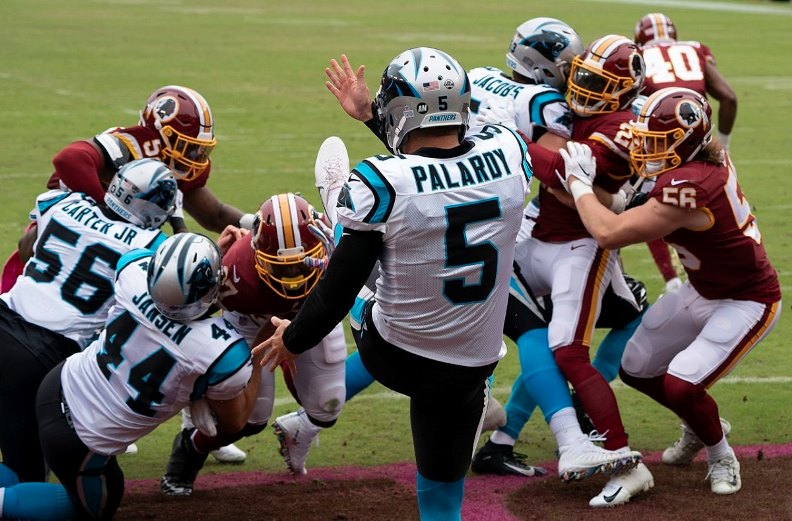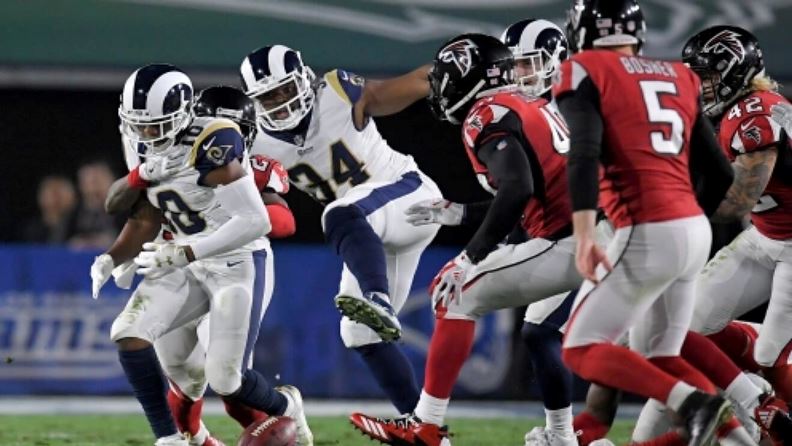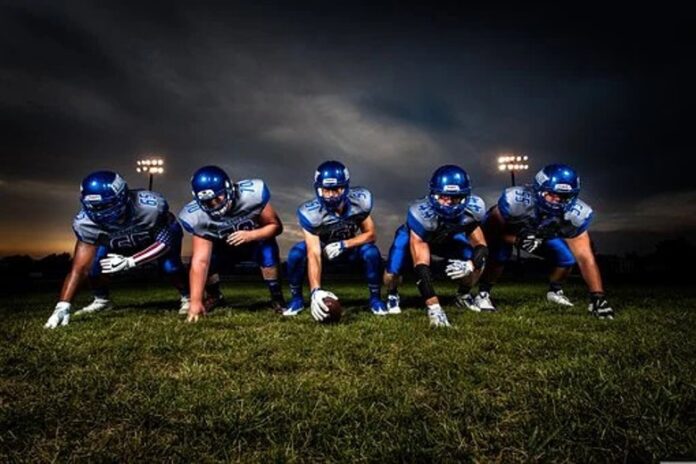What are the special teams in football? The reality of the matter is that one of the distinguishing features of football is that it has special teams. The term “special teams” is used to describe several units whose function is to kick the ball. It might be the team that defends against the kick, the team that kicks the ball, or the team that returns the kick.
A unit that is responsible for plays on the field that center on the kicking game is referred to as a special team. This is true regardless of whether the team in question is attempting a kick, returning a kick, or defending a kick.
In most games, the special team’s units only take the field for around 20 percent of the overall game time, yet they are responsible for a significant portion of the final score.
They are neither the side that will be defending nor will they be the ones that will be attacking. Instead, these football teams are only on the field for around twenty percent of the whole game. However, given that they are responsible for around 30–35% of the total score, their part cannot be underestimated. It is true that offenses play a far more significant part in the overall production of points, but it is important to keep in mind that special teams also have an impact on how well offenses and defenses perform.
Additionally, they have a considerable influence on the starting positions of the defense and attack for each individual possession of the ball.
So what are the special teams in football? What do special teams mean in football? Let’s get the right answer!
What are the special teams in football?

In the majority of seasons played in the National Football League, the points scored by special teams account for around 35 percent of the total points scored.
The special teams of the opposing team are solely responsible for determining where offensive drives begin on the field. There are two different units participating in each of the game’s four primary special teams’ areas of responsibility: offense, defense, and special situations. A football team is comprised of numerous different groups that are referred to as special teams.
These four are:
- Kickoffs
- Punts
- Field Goal Attempts
- Extra Point Attempts
Kickoffs
The kickoff is the first play in each and every football game. It is distinct from other kicking plays, such as snapping the ball to a punter or holder, as this particular kicking play involves a ball that is free-standing on a tee. This is one of the elements that make this kicking game unique.
During the kickoff, it will be the responsibility of the kicker to place the ball on the tee somewhere around the 35-yard line and then kick it into the end zone of the opposing team in order to advance the ball closer to the goal line. In the event that the opposing team recovers this ball and places it in their end zone, the play will end in a touchback, and the line of scrimmage will move back to the 25-yard line.
One kickoff return will take place while the kickoff is in progress. The unit that the special team plays in normally positions its defenders 10 feet away from the tee.
The kickoff returners are chosen from among two players located near the end zone. These men have the ability to play in a variety of positions, such as cornerbacks, running backs, or wide receivers.
Punts
When faced with a fourth down during an offensive drive, the offensive side would often punt the ball in order to prevent turning the ball over on their own field. In contrast to the kickoff and every other play that involves kicking the ball, the punter is required to touch the ball before kicking it.
When the play is about to begin, the long snapper is supposed to throw a ball back to the punter, who is supposed to receive it and then let it drop when they kick it.
A similar defensive formation will be used for one of the kickoffs. However, the defensive line should have one player in the backfield who can return punts. He has the option of either immediately returning the ball after catching it or waving it dead as if it were part of a single fair catch.
The same rule applies to punts as it does to kickoffs: if the punting team kicks the ball so far beyond or lands it in the end zone, the play will result in one touchback, and the subsequent drive will begin from the 25-yard line. This rule is the same as it is for kickoffs.
Field Goal and Extra Point Attempts

Both field goals and extra points may be explained using the same group of players since the exact same formation is used for both sorts of plays (field goals and extra points).
Following the scoring of a touchdown, a player is awarded an extra point, which is worth one point.
The two-yard line is the starting point for football at all levels of football, from youth football to college football.
In order to increase the difficulty of kicking in the National Football League (NFL), the ball is positioned at the 15-yard line.
It is possible to try field goals, which are worth three points each, from any location on the playing field.
The ability of a team’s kicker to get the ball a long distance will be the determining factor in determining how far from the end zone they will try a field goal.
In the National Football League, the ball must be within 35 to 40 yards of the opponent’s line or closer most of the time.
It has to be much more intense when you go down to the lesser levels of football.
There are some youth football teams that will not try a field goal because they do not currently have a kicker on their squad that has legs that are powerful enough.
Additionally, attempts for field goals are often made on the fourth down.
They function in the same way as punts and are called when the offense is unable to convert the first down.
If the offense was successful in moving the ball near enough to the end zone for the special teams unit to attempt the kick, then the offense will try to kick a field goal instead of punting the ball.
The players will line up in the same formation for both the field goal attempt and the extra point attempt, and their roles will be almost identical in both situations.
At the line of scrimmage, the kicking team will arrange themselves with seven guys, very similar to how an offensive line would normally line up for a typical offensive play.
The long snapper takes his position above the ball, and three players line up on each side of him in formation.
Instead of forming a single file line across the field, these players would rather line up in the shape of a bow, with their backs slightly curved away from the line of scrimmage.
In addition to this, rather than beginning in a three-point stance, they will begin in a two-point stance with their hands on their hips.
Two wingbacks will be stationed on either side of the field, one on the offensive side and one on the defensive side of the line of scrimmage. They will be positioned a few yards into the backfield and on a diagonal from the players at the end of the line of scrimmage.
The holder will take their position around seven yards behind the long snapper, slightly off to the right or left, depending on whether the kicker kicks with their left or right foot.
The holder will position himself such that one of his knees is resting on the ground, and the other leg will be bent with the foot resting on the floor.
The kicker will take his position a few yards behind the holder, somewhat off to the side of where the holder is standing. This will allow him to get off to a somewhat faster start, allowing him to deliver a more powerful kick to the ball.
The long snapper will then throw the ball to the holder, who will receive it and lay it nose down on the field at a slight angle for the kicker. The laces of the football will be turned away from the kicker so that he may kick the back side of the football.
In the meantime, the opposing team will line up and make an effort to either block or, at the very least, impede the attempt at a field goal or extra point.

Ten of the eleven players on that team will line up at the line of scrimmage, but they will do so in a formation that is essentially identical to a straight line but more spaced out.
The other player will line up behind them, with their shoulder shaded to one of the long snapper’s shoulders.
At the moment of the snap, the ten players who are now stationed at the line of scrimmage will make an effort to penetrate the line and make their way to the kicker in order to thwart his attempt to block or otherwise interfere with the kick.
The two outside defenders will attempt to go past the wingbacks by taking a wide angle with their movement.
The player who is set up off the line of scrimmage will make an effort to leap as high as he can and put his hands in the air in order to stop the kick.
FAQs
Who Can Play on Football Special Teams?
The following are some of the most important players on special teams in NFL football:
Punter
Holder
Kicker
Gunner
Kick Returner
Punt Returner
Long Snapper
Personal Protector
How Many Players Are on Special Teams?
At any one moment, the special teams field the same number of players as the offense and defense: eleven. This number of players remains constant throughout the game.
What Are the 6 Special Teams in Football?
There are the following 6 teams in football:
Kickoff team
Kick return team
Punting team
Punt blocking/return team
Field goal team
The field goal blocks the team.
Are special teams crucial in football?
Football teams are not complete without their special teams. Although they are only on the field for around twenty percent of each game, special team units are very important to the overall performance of a team.
Are special teams in football on defense or offense?
When they are on special teams, players on such squads do not participate in either the offense or the defense of the team. Even though some of them may be offensive or defensive players at different positions, they are still regarded to be special team players while they are participating in the game.
Conclusion
The special teams are something really unique and special.
Although they are not as well-known as the offensive or defensive units, the performance of these units has just as much of an influence, if not more, on the result of the game as the offensive and defensive groups do.
According to a common proverb, a football team’s special teams do not often win games for the squad, but they may very easily lose games.
Because of this, it is of the utmost importance for young football teams to educate their players about what special teams are and the duties that each player on the field performs, and then to practice, practice, and practice in order to perfect their plays.
They have the potential to play a substantial role in the game’s eventual outcome. They are excellent at turning the tide of the battle and are maybe the one thing that can shatter an opponent’s resolve.
By the time you reach the end of this article, your question, “What do special teams mean in football?” should have an answer.


